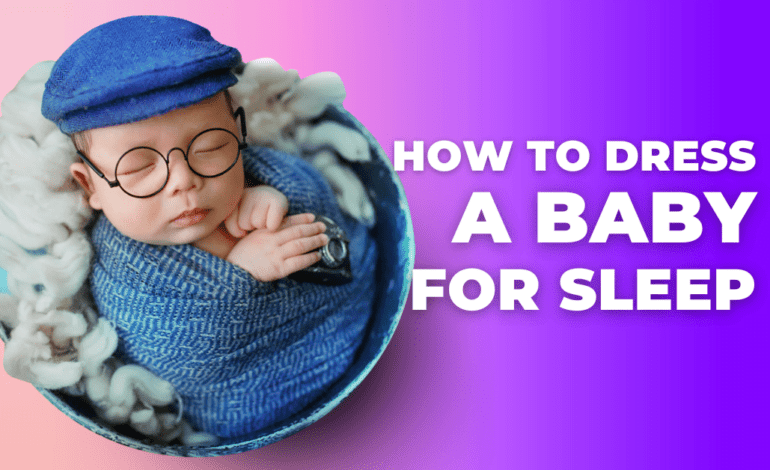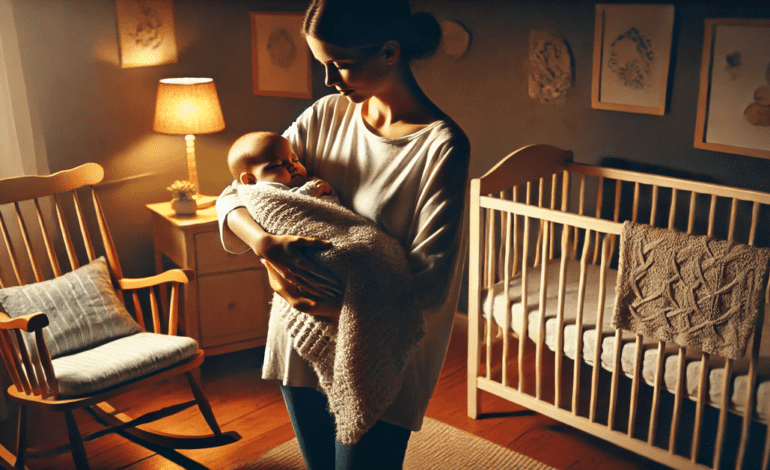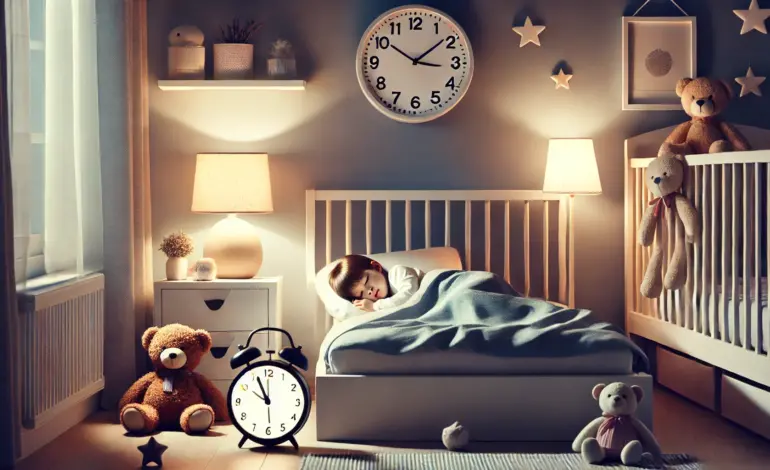How to Dress Baby for Sleep: Essential Tips for Safe and Comfortable Nights

Introduction
Dressing your baby for sleep can be a bit of a puzzle for new parents. The right sleepwear ensures your baby stays comfortable and safe throughout the night. Overdressing or underdressing can lead to discomfort and even health issues. In this guide, we’ll cover how to dress baby for sleep, signs baby is too hot while sleeping, and the best practices to keep your little one cozy and safe.
Understanding Baby Sleepwear Basics
Choosing the Right Fabric
When considering how to dress baby for sleep, the fabric of their sleepwear is a vital factor. Babies have delicate skin that is prone to irritation, so choosing soft, breathable, and non-irritating materials is essential. Cotton is an excellent choice as it is gentle on the skin and allows for good airflow.
Layering Appropriately
Layering is another important aspect when figuring out how to dress baby for sleep. The general rule of thumb is to dress your baby in one more layer than what you are comfortable in. For example, if you are comfortable in a t-shirt, your baby might need a t-shirt and a light swaddle.
Considering Room Temperature
The room temperature plays a significant role in deciding how to dress baby for sleep. The ideal room temperature for a baby’s sleep environment is between 68-72°F (20-22°C). This temperature range helps ensure that your baby does not overheat or get too cold while sleeping.
Signs Baby is Too Hot While Sleeping
Sweating
One of the most obvious signs baby is too hot while sleeping is sweating. If your baby wakes up with a sweaty head, neck, or back, they might be too hot.
Red or Flushed Skin
Red or flushed skin is another indicator that your baby might be too hot. If your baby’s skin appears redder than usual, especially on their face or chest, it could be a sign that they are overheating.
Rapid Breathing
Rapid or irregular breathing can also be a sign your baby is too hot while sleeping. If you notice that your baby is breathing faster than usual, it might be time to adjust their sleepwear or room temperature.
Heat Rash
Heat rash is a common symptom of overheating in babies. It appears as small red bumps on the skin, usually in areas where the clothing is tight or where the skin folds. If you notice a rash on your baby, it might be a sign they are too hot while sleeping.
How to Dress Baby for Sleep in Different Seasons
Summer
In summer, lightweight sleepwear is key. Opt for short-sleeve cotton onesies or sleep sacks that are breathable. Avoid heavy blankets and instead use a light swaddle if necessary. Keeping the room cool with a fan or air conditioning can also help when deciding how to dress baby for sleep during hot weather.
Winter
During winter, it’s important to keep your baby warm without overheating them. Layering is effective here: start with a cotton onesie and add a footed sleep suit. Depending on the room temperature, you might add a swaddle or sleep sack. Ensure that the room is warm enough, but not too hot, to maintain a comfortable sleep environment. Knowing how to dress baby for sleep in colder months is crucial for their comfort and safety.
Spring and Fall
In transitional seasons like spring and fall, dressing your baby for sleep can be a bit tricky due to fluctuating temperatures. Opt for layers that can easily be added or removed, such as a long-sleeve onesie and a sleep sack. Regularly check the room temperature to ensure it remains within the ideal range. Understanding how to dress baby for sleep during these seasons ensures they remain comfortable as the weather changes.
Tips for Monitoring Your Baby’s Temperature
Using a Room Thermometer
A room thermometer can be a valuable tool in ensuring your baby’s sleep environment is at the right temperature. Place it near your baby’s crib to get an accurate reading and adjust the room temperature as needed. This helps in determining how to dress baby for sleep effectively.
Checking Your Baby’s Neck
The best way to check if your baby is too hot while sleeping is by feeling the back of their neck. If it feels warm and sweaty, they might be too hot. Conversely, if it feels cool, you might need to add a layer of clothing. Recognizing these signs helps in deciding how to dress your baby for sleep properly.
Dressing Your Baby for Naps
The principles of dressing your baby for nighttime sleep also apply to naps. Ensure they are dressed comfortably and appropriately for the room temperature to avoid overheating during daytime naps. This consistent approach in how to dress your baby for sleep ensures their comfort throughout the day.
Common Mistakes to Avoid
Overbundling
One of the most common mistakes parents make is overbundling their baby. This can easily cause overheating. Remember, babies do not need as many layers as we might think. Stick to the one-layer-more rule to avoid this issue and ensure you know how to dress your baby for sleep correctly.
Using Heavy Blankets
Heavy blankets can increase the risk of overheating and also pose a suffocation risk. Instead, use lightweight blankets or sleep sacks designed for babies. These provide warmth without the dangers associated with heavy blankets. This is an important aspect of how to dress your baby for sleep safely.
Not Adjusting for Temperature Changes
Failing to adjust your baby’s sleepwear according to changes in room temperature can lead to discomfort. Always be mindful of the temperature and make necessary adjustments to your baby’s sleepwear. This ensures you are aware of how to dress your baby for sleep in varying conditions.
Creating a Safe Sleep Environment
Safe Bedding
Ensure your baby’s crib is free of loose bedding, pillows, and stuffed animals. These can pose suffocation risks and also contribute to overheating. Use a fitted sheet on the mattress and opt for a sleep sack to keep your baby warm. This is a key part of knowing how to dress your baby for sleep and keeping them safe.
Ventilation
Proper ventilation in the room helps regulate temperature and ensures a flow of fresh air. Avoid placing the crib near heaters or direct sunlight, as this can cause the temperature to rise. Maintaining good ventilation supports your efforts in how to dress your baby for sleep comfortably.
Regular Checks
Regularly check on your baby during sleep, especially in the first few months. Look for signs baby is too hot while sleeping, such as sweating or rapid breathing, and adjust their clothing or room temperature as needed. This vigilance is crucial in how to dress your baby for sleep effectively.
Additional Tip: Quick Sleep Techniques
In addition to knowing how to dress your baby for sleep, it’s also helpful to have techniques for helping your baby fall asleep quickly. For a quick and effective method, check out our guide on how to put a baby to sleep in 40 seconds. This can be a lifesaver for parents looking for efficient ways to ensure their baby gets the rest they need.
Conclusion
Knowing how to dress your baby for sleep and recognizing signs baby is too hot while sleeping are crucial for your baby’s comfort and safety. By choosing the right fabrics, layering appropriately, and monitoring room temperature, you can ensure your baby sleeps soundly and safely. Always be vigilant for signs of overheating, such as sweating, red skin, rapid breathing, or heat rash. Adjust your baby’s sleepwear and the sleep environment accordingly to keep them comfortable through all seasons.
Remember, a well-dressed baby is a happy and healthy baby. Following these guidelines will help you provide the best sleep environment for your little one, ensuring they get the rest they need to grow and thrive. Understanding how to dress your baby for sleep and recognizing signs baby is too hot while sleeping will give you peace of mind and help your baby sleep better.
FAQs
How many layers should a baby wear to sleep?
Generally, one more layer than what you are comfortable wearing. This could be a onesie under a sleep sack or a sleeper.
Can I use a blanket for my baby while they sleep?
It’s safer to use a sleep sack instead of a blanket to avoid the risk of suffocation.
How often should I check on my baby during the night?
Check on your baby periodically, especially if you notice signs of discomfort or if the room temperature changes.
What type of fabric is best for baby sleepwear?
Breathable fabrics like cotton or bamboo are ideal as they help regulate your baby’s body temperature.
How can I tell if my baby is too cold while sleeping?
If your baby’s hands and feet are cold, or if they are waking up frequently, they might be too cold. Add a layer or increase the room temperature slightly.
Is it okay to use a fan in the baby’s room?
Yes, but ensure it’s not blowing directly on the baby. A fan can help circulate air and maintain a comfortable temperature.





